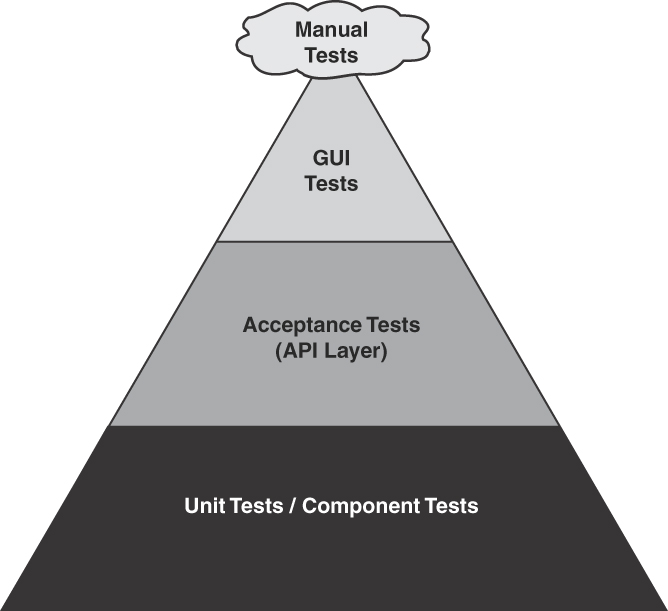Testing
Of all the practices you can leverage to assist your craftsmanship, you will get the most benefit from testing. You may say, “We have been testing software for years, and we still have lots of bugs.” Therein lies the key to going forward.
In a Lean system, you try to prevent defects rather than catch them. The tradition of software testing has been one of catching defects. It should not surprise us, then, that we have an inefficient process. The earlier you test, the sooner you catch defects.
Does that mean you are still just catching defects? If you write the tests after the code, then yes. If you close the gap between creating and catching the defects, less change occurs between the two events. You have a higher likelihood of the context of the created code being fresh in your mind. If you write the test immediately after writing the code, it can verify your conceptions and assumptions and keep you on course.
You also have an opportunity to really catch the bugs before they occur, however. Test-first and test-driven approaches to development bring the testing before the coding. When you test first, you capture your intent in an automatable and executable form. You focus on what you are about to write in a way that works to prevent defects rather than create them. The tests you write serve as a persistent reinforcement of that intent going forward. In addition to helping you do the thing right, it helps you to do the right thing. Remember, it is still a bug if you implement the wrong thing really well.
Within this model, test-driven development (TDD) is a subset of test-first approaches. Test first allows you to write as many and as fully coded tests as you want prior to writing your code. Test first brings the quality forward, but it gives you greater latitude to speculate about what you need and the form it will take. If you designed a solution that is more general than you need, you run the risk not only of spending more time in the creation, but also of creating a larger maintenance burden than you need, a cost that carries forward indefinitely. Additionally, writing too many tests in advance increases the cost of change if you discover a better approach to the problem. For these reasons, TDD gives you a more disciplined and leaner approach to the creation of software. You create just what you need right as you need it. The discoveries you make about insufficient foresight and incomplete prior understanding guide the direction of your code.
The principles put forth in this book will help you test effectively, regardless of when you test relative to when you code, but the earlier you test, the more this book will help. One of the guidelines around Agile development and testing is the Automated Testing Triangle (Figure 1-1). Traditionally, we have focused on system-level testing, which tends to either be brittle if it verifies too deeply or cursory if it aims to be more maintainable. We will never be able to replace system-level testing, but we can shift the balance of tests to lower-level unit tests.

Figure 1-1: The Automated Testing Triangle puts high investment in smaller tests because, when well written, they are less brittle and easier to maintain.
I have heard people object to extensive unit tests on the grounds that they are brittle and hard to maintain. Well-written unit tests have exactly the opposite characteristics. The principles and techniques in this book will help you understand the reasons unit testing can become entangled and how to avoid them.
